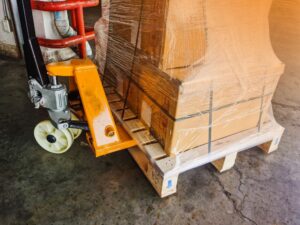Crown USA Inc., a Woodbury, Georgia, plastic and resin manufacturer, faces a $98,699 OSHA fine after a 37-year-old employee suffered fatal injuries while performing machine maintenance, the agency announced June 20.
The maintenance technician was crushed inside an unlocked hooding palletizer while servicing the machine, according to OSHA.
Agency investigators determined that the employer’s violations included the following:
- Failing to use adequate machine guarding to protect employees from struck-by and crushed-by hazards;
- Failing to train employees on energy control (lockout/tagout) procedures and maintain training records;
- Failing to conduct inspections of energy control procedures;
- Exposing workers to serious respiratory hazards by not protecting them from accumulations of airborne particles of powdered pigment and other types of dust throughout the facility;
- Not providing PPE to prevent eye and skin irritation; and
- Failing to label containers properly in accordance with the hazard communication standard.
OSHA cited Crown USA with eight serious and six other-than-serious violations.
The agency’s hazard communication, lockout/tagout, and machine guarding standards are some of its most frequently cited rules. Last year, OSHA announced that its hazard communication standard (29 Code of Federal Regulations (CFR) §1910.1200) was the agency’s second most cited standard overall and most cited general industry standard. OSHA cited 3,213 hazard communication violations in fiscal year (FY) 2023. The lockout/tagout standard (§1910.147) was the agency’s sixth most cited standard, cited 2,554 times in FY 2023. The machine guarding standard (§1910.212) was the tenth most cited, cited 1,644 times in FY 2023.
“Employers must understand federal workplace safety regulations exist to help prevent tragedies like the one that occurred at Crown USA Inc.,” Jeffery Stawowy, OSHA’s Atlanta-West area office director, said in a statement. “OSHA is available to answer employers’ questions and to help them understand their obligations. We can also provide employers resources for identifying hazards in their workplaces and developing safety programs.”

